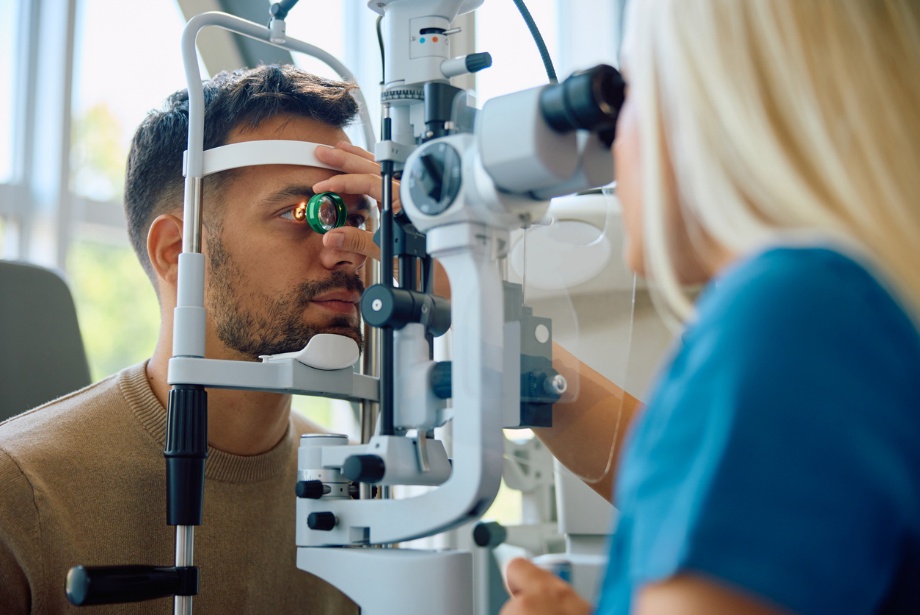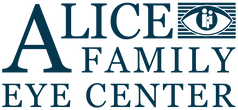At Alice Family Eye Center, we believe that clear vision is essential to living a full and independent life. Cataracts are one of the most common vision conditions that can affect people as they age. Although cataracts are often associated with older adults, they can develop at any age. Understanding what cataracts are, how they form, and the available treatment options can help you make informed decisions about your eye health.
What Are Cataracts?
A cataract is a clouding of the natural lens inside the eye. This lens is normally clear and helps focus light on the retina at the back of the eye. When a cataract develops, it causes the lens to become cloudy, which can interfere with your vision. Cataracts often progress slowly and may not cause noticeable symptoms at first, but over time, they can significantly affect daily activities such as reading, driving, and recognizing faces.Cataracts often start to form around the age of 40, but they usually do not affect vision significantly until after 60. Although cataracts are more common in older adults, they can also appear in younger people due to factors such as inherited conditions or eye injuries According to the National Eye Institute,over half of Americans over 80 years old either have cataracts or have had cataract surgery.
What Causes Cataracts?
Cataracts can develop due to a variety of factors, including:
- Aging: The most common cause of cataracts is the natural aging process. As people age, the proteins in the eye’s lens can break down and clump together, forming a cloudy area.
- Genetics: A family history of cataracts may increase your risk of developing them.
- Medical Conditions: Certain health issues, such as diabetes, can contribute to the formation of cataracts.
- Eye Injuries or Surgeries: Past trauma or surgery on the eye may increase the likelihood of developing cataracts.
- Exposure to UV Rays: Long-term exposure to ultraviolet light from the sun can damage the eye and lead to cataracts.
- Smoking and Alcohol Use: Lifestyle factors such as smoking and excessive alcohol consumption may also play a role.
Common Symptoms of Cataracts

As cataracts develop, you may notice the following symptoms:
- Blurry or cloudy vision
- Sensitivity to light or glare
- Difficulty seeing at night
- Faded or yellowed colors
- Double vision in one eye
- Frequent changes in eyeglass or contact lens prescriptions
If you are experiencing any of these symptoms, scheduling a comprehensive eye exam is essential.
How Are Cataracts Treated?
In the stages, we can help you managecataracts with updated eyeglass prescriptions. Also using brighter lighting can help. However, we may recommend cataract surgery when vision loss begins to interfere with your daily life.
Cataract surgery is a safe and effective outpatient procedure that involves removing the cloudy lens and replacing it with a clear artificial lens, known as an intraocular lens (IOL). The surgery is a quick and routine procedure that typically takes about 15 to 30 minutes to complete. Most patients return home the same day and experience improvement in their vision within a few days, although full healing may take several weeks.
How Can You Prevent Cataracts?

While cataracts are a common part of the aging process, there are several steps you can take to reduce your risk and slow their progression. Preventative eye care is essential to maintaining healthy vision for years to come.
Here are tips to help prevent cataracts:
- Protect Your Eyes from UV Rays: Wear sunglasses that block 100 percent of both UVA and UVB rays whenever you are outdoors. A wide-brimmed hat can also help shield your eyes from direct sunlight.
- Maintain a Healthy Diet: Eating a balanced diet rich in antioxidants, such as vitamins C and E, lutein, and zeaxanthin, can support eye health. Leafy greens, colorful fruits, and vegetables are excellent choices.
- Do Not Smoke: Smoking increases the risk of cataract formation. If you smoke, consider seeking support to help you quit. Your eyes—and your overall health—will benefit.
- Limit Alcohol Consumption: Excessive alcohol use creates a higher risk of cataracts. Drinking in moderation or abstaining altogether can help protect your vision.
- Manage Health Conditions: If you have conditions such as diabetes or high blood pressure, work closely with your healthcare provider to keep them under control. Chronic illnesses can contribute to the development of cataracts.
- Have Regular Eye Exams: Routine comprehensive eye exams allow your eye doctor to detect early signs of cataracts and other vision issues. Early detection leads to better outcomes and more treatment options.
These steps can help preserve your vision and reduce the likelihood of cataract development. At Alice Family Eye Center, we support your eye health with personalized care and preventative guidance.
Schedule an Eye Exam with Alice Family Eye Center Today

Our experienced team is committed to helping you maintain healthy vision at every stage of life. If you are concerned about cataracts or have not had a recent eye exam, we encourage you to schedule an appointment. Early detection and treatment can help preserve your vision and improve your quality of life.
Your eyes deserve the best care. Let us help you see clearly.
Dr. Garza
Alice Family Eye Center
777 N Texas Blvd Alice, TX 78332
361-668-3937





